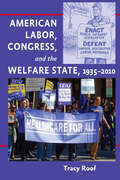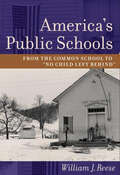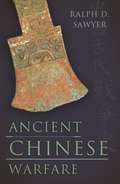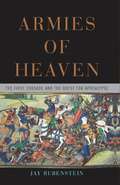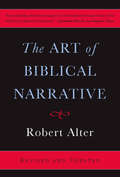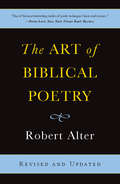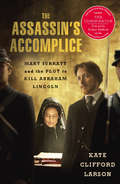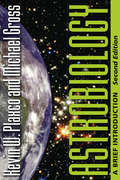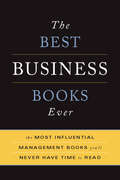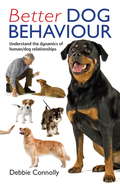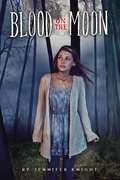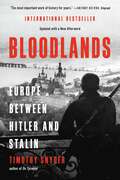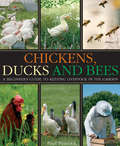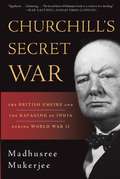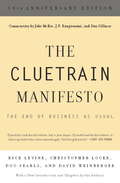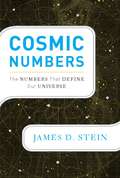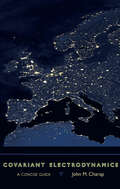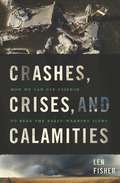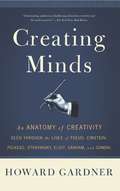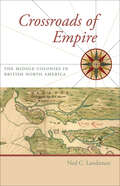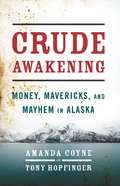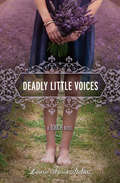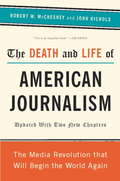- Table View
- List View
American Labor, Congress, and the Welfare State, 1935–2010
by Tracy RoofDespite achieving monumental reforms in the United States such as the eight-hour workday, a federal minimum wage, and workplace health and safety laws, organized labor’s record on much of its agenda has been mixed. Tracy Roof’s sweeping examination of labor unions and the American legislative process explains how this came to be and what it means for American workers.Tracing a 75-year arc in labor movement history, Roof discusses the complex interplay between unions and Congress, showing the effects of each on the other, how the relationship has evolved, and the resulting political outcomes. She analyzes labor’s success at passing legislation and pushing political reform in the face of legislative institutional barriers such as the Senate filibuster and an entrenched and powerful committee structure, looks at the roots and impact of the interdependent relationship between the Democratic Party and the labor movement, and assesses labor’s prospects for future progress in creating a comprehensive welfare state. Roof’s original investigation details the history, actions, and consequences of major policy battles over areas such as labor law reform and health care policy. In the process, she brings to light practical and existential questions for labor leaders, scholars, and policy makers.Although American labor remains a force within the political process, decades of steadily declining membership and hostile political forces pose real threats to the movement. Roof’s shrewd exploration of unions, Congress, and the political process challenges conventional explanations for organized labor’s political failings.
America's Public Schools: From the Common School to "No Child Left Behind" (The American Moment)
by William J. ReeseIn this update to his landmark publication, William J. Reese offers a comprehensive examination of the trends, theories, and practices that have shaped America’s public schools over the last two centuries. Reese approaches this subject along two main lines of inquiry—education as a means for reforming society and ongoing reform within the schools themselves. He explores the roots of contemporary educational policies and places modern battles over curriculum, pedagogy, race relations, and academic standards in historical perspective.A thoroughly revised epilogue outlines the significant challenges to public school education within the last five years. Reese analyzes the shortcomings of "No Child Left Behind" and the continued disjuncture between actual school performance and the expectations of government officials. He discusses the intrusive role of corporations, economic models for enticing better teacher performance, the continued impact of conservatism, and the growth of home schooling and charter schools. Informed by a breadth of historical scholarship and based squarely on primary sources, this volume remains the standard text for future teachers and scholars of education.
Ancient Chinese Warfare
by Ralph D. SawyerThe history of China is a history of warfare. Rarely in its 3,000-year existence has the country not been beset by war, rebellion, or raids. Warfare was a primary source of innovation, social evolution, and material progress in the Legendary Era, Hsia dynasty, and Shang dynasty--indeed, war was the force that formed the first cohesive Chinese empire, setting China on a trajectory of state building and aggressive activity that continues to this day.In Ancient Chinese Warfare, a preeminent expert on Chinese military history uses recently recovered documents and archaeological findings to construct a comprehensive guide to the developing technologies, strategies, and logistics of ancient Chinese militarism. The result is a definitive look at the tools and methods that won wars and shaped culture in ancient China.
Armies of Heaven: The First Crusade and the Quest for Apocalypse
by Jay RubensteinAt Moson, the river Danube ran red with blood. At Antioch, the Crusaders- their saddles freshly decorated with sawed-off heads-indiscriminately clogged the streets with the bodies of eastern Christians and Turks. At Ma'arra, they cooked children on spits and ate them. By the time the Crusaders reached Jerusalem, their quest-and their violence- had become distinctly otherworldly: blood literally ran shin-deep through the streets as the Crusaders overran the sacred city. Beginning in 1095 and culminating four bloody years later, the First Crusade represented a new kind of warfare: holy, unrestrained, and apocalyptic. In Armies of Heaven, medieval historian Jay Rubenstein tells the story of this cataclysmic event through the eyes of those who witnessed it, emphasizing the fundamental role that apocalyptic thought played in motivating the Crusaders. A thrilling work of military and religious history, Armies of Heaven will revolutionize our understanding of the Crusades.
The Art of Biblical Narrative
by Robert AlterFrom celebrated translator of the Hebrew Bible Robert Alter, the classic study of the Bible as literature, a winner of the National Jewish Book AwardRenowned critic and translator Robert Alter's The Art of Biblical Narrative has radically expanded our view of the Bible by recasting it as a work of literary art deserving studied criticism. In this seminal work, Alter describes how the Hebrew Bible's many authors used innovative literary styles and devices such as parallelism, contrastive dialogue, and narrative tempo to tell one of the most revolutionary stories of all time: the revelation of a single God. In so doing, Alter shows, these writers reshaped not only history, but also the art of storytelling itself.
The Art of Biblical Poetry
by Robert AlterThree decades ago, renowned literary expert Robert Alter radically expanded the horizons of biblical scholarship by recasting the Bible as not only a human creation but a work of literary art deserving studied criticism. In The Art of Biblical Poetry, his companion to the seminal The Art of Biblical Narrative, Alter takes his analysis beyond narrative craft to investigate the use of Hebrew poetry in the Bible. Updated with a new preface, myriad revisions, and passages from Alter's own critically acclaimed biblical translations, The Art of Biblical Poetry is an indispensable tool for understanding the Bible and its poetry.
The Assassin's Accomplice: Mary Surratt and the Plot to Kill Abraham Lincoln
by Kate Clifford LarsonIn The Assassin's Accomplice, historian Kate Clifford Larson tells the gripping story of Mary Surratt, a little-known participant in the plot to kill Abraham Lincoln, and the first woman ever to be executed by the federal government of the United States. Surratt, a Confederate sympathizer, ran the boarding house in Washington where the conspirators-including her rebel son, John Surratt-met to plan the assassination. When a military tribunal convicted her for her crimes and sentenced her to death, five of the nine commissioners petitioned President Andrew Johnson to show mercy on Surratt because of her sex and age. Unmoved, Johnson refused-Surratt, he said, "kept the nest that hatched the egg.” Set against the backdrop of the Civil War, The Assassin's Accomplice tells the intricate story of the Lincoln conspiracy through the eyes of its only female participant. Based on long-lost interviews, confessions, and court testimony, the text explores how Mary's actions defied nineteenth-century norms of femininity, piety, and motherhood, leaving her vulnerable to deadly punishment historically reserved for men. A riveting narrative account of sex, espionage, and murder cloaked in the enchantments of Southern womanhood, The Assassin's Accomplice offers a fresh perspective on America's most famous murder.
Astrobiology: A Brief Introduction
by Kevin W. Plaxco Michael GrossInformed by new planetary discoveries and the findings from recent robotic missions to Mars, Jupiter, and Saturn, scientists are rapidly replacing centuries of speculation about potential extraterrestrial habitats with real knowledge about the possibility of life outside our own biosphere—if it exists, and where. This second edition of Kevin W. Plaxco and Michael Gross’s widely acclaimed text incorporates the latest research in astrobiology to bring readers the most comprehensive, up-to-date, and engaging introduction to the field available.Plaxco and Gross expand their examination of the origin of chemical elements, the developments that made the Universe habitable, and how life continues to be sustained. They discuss in great detail the formation of the first galaxies and stars, the diverse chemistry of the primordial planet, the origins of metabolism, the evolution of complex organisms, and the feedback regulation of Earth's climate. They also explore life in extreme habitats, potential extraterrestrial habitats, and the current status of the search for extraterrestrial life.Weaving together the relevant threads of astronomy, geology, chemistry, biophysics, and microbiology, this broadly accessible introductory text captures the excitement, controversy, and progress of the dynamic young field of astrobiology. New to this edition is a glossary of terms and an epilogue recapping the key unanswered questions, making Astrobiology an ideal primer for students and, indeed, for anyone curious about life and the Universe.
Astrobiology: A Brief Introduction
by Michael Gross Kevin W. PlaxcoInformed by new planetary discoveries and the findings from recent robotic missions to Mars, Jupiter, and Saturn, scientists are rapidly replacing centuries of speculation about potential extraterrestrial habitats with real knowledge about the possibility of life outside our own biosphere—if it exists, and where. This second edition of Kevin W. Plaxco and Michael Gross’s widely acclaimed text incorporates the latest research in astrobiology to bring readers the most comprehensive, up-to-date, and engaging introduction to the field available.Plaxco and Gross expand their examination of the origin of chemical elements, the developments that made the Universe habitable, and how life continues to be sustained. They discuss in great detail the formation of the first galaxies and stars, the diverse chemistry of the primordial planet, the origins of metabolism, the evolution of complex organisms, and the feedback regulation of Earth's climate. They also explore life in extreme habitats, potential extraterrestrial habitats, and the current status of the search for extraterrestrial life.Weaving together the relevant threads of astronomy, geology, chemistry, biophysics, and microbiology, this broadly accessible introductory text captures the excitement, controversy, and progress of the dynamic young field of astrobiology. New to this edition is a glossary of terms and an epilogue recapping the key unanswered questions, making Astrobiology an ideal primer for students and, indeed, for anyone curious about life and the Universe.
The Best Business Books Ever: The Most Influential Management Books You'll Never Have Time To Read
by Basic BooksEvery manager could benefit from a solid grounding in the history and evolution of business thinking. The Best Business Books Ever is a uniquely organized guide and an illuminating collection of key ideas from the 130 most influential business books of all time. It places both historical and contemporary works in context and draws fascinating parallels and points of connection. Now fully revised and more than 30 percent bigger, this one book highlights the information you need to know and why it's important to know it, and does it all in a succinct, time-saving fashion. Business moves faster than ever these days. For the businessperson who has a growing list of tomes that they can never quite seem to get to, The Best Business Books Ever is a must-have.
Better Dog Behaviour
by Debbie ConnollyMany dog owners in the UK don't understand the dynamics of human/dog relationships and consequently experience problems with their pets, such as barking, aggression, chasing livestock, chewing, pulling and running away. Experienced dog trainer Debbie Connolly shows new and experienced dog owners alike how to deal with such behaviour problems, so that the dog can become a safe and happy member of their family.Debbie recounts real-life anecdotes to get across the serious point that you are playing with your dog's life, if you can't or won't learn to treat your dog appropriately.Some of the stories she tells are funny, some are sad, but all of them are easy for her readers to identify with and relate to.She explains how to get a dog from the right source and how to live with it afterwards.She gives practical advice on how to solve all the common problems dog owners face. And she isn't afraid to raise important issues that others avoid - issues that dog owners actually face in the real world, for example, when you should give up and put your dog to sleep.
Blood on the Moon (Blood on the Moon #1)
by Jennifer KnightAs Faith Reynolds enters her freshman year of college, she is a complete and utter nervous wreck. With her best friend Derek suddenly pulling out the romance card and her dark, mysterious classmate staring her down at every turn, Faith somehow feels stuck in the middle without dating either one. And fortune may or may not be with her when a devilshly sexy stranger offers her a welcome escape. Boys, romance, classes, and annoying roommates are all within the realm of the expected for a college frosh. Trying to solve the mysterious murders of young college coeds near campus is not. Darkness seems to be creeping into every corner of Faith's life, no matter the hour. And when she seeks the truth, danger seems to be the only thing that finds her. Faith is well aware of the strange currents in the air, particularly when she sets off static sparks with everything she touches. Before long, she finds herself entrenched in the deep-seeded battle between werewolves and vampires. The war has reached the tipping point, and Faith has the power to determine where the scales fall. But the most important question may be with whom does her loyalty lie? Deliciously suspenseful and immediately addictive, Blood on the Moon features a headstrong heroine and all of the thrills, chills, and otherworldly boys with deadly charm that a human could ask for.
Bloodlands: Europe Between Hitler and Stalin
by Timothy SnyderFrom the bestselling author of On Tyranny, the definitive history of Hitler's and Stalin's wars against the civilians of Europe in World War TwoAmericans call the Second World War "The Good War."But before it even began, America's wartime ally Josef Stalin had killed millions of his own citizens--and kept killing them during and after the war. Before Hitler was finally defeated, he had murdered six million Jews and nearly as many other Europeans. At war's end, both the German and the Soviet killing sites fell behind the iron curtain, leaving the history of mass killing in darkness. Bloodlands is a new kind of European history, presenting the mass murders committed by the Nazi and Stalinist regimes as two aspects of a single history, in the time and place where they occurred: between Germany and Russia, when Hitler and Stalin both held power. Assiduously researched, deeply humane, and utterly definitive, Bloodlands will be required reading for anyone seeking to understand the central tragedy of modern history. Bloodlands won twelve awards including the Emerson Prize in the Humanities, a Literature Award from the American Academy of Arts and Letters, the Leipzig Award for European Understanding, and the Hannah Arendt Prize in Political Thought. It has been translated into more than thirty languages, was named to twelve book-of-the-year lists, and was a bestseller in six countries.
Chickens, Ducks and Bees: A beginner's guide to keeping livestock in the garden
by Paul PeacockGrowing your own vegetables often leads gardeners to want to go one step further and keep some livestock. Chickens, ducks and bees are the most likely candidates for the first time livestock owner - especially if you live in a town or have only a small amount of land. They can all be kept happily together. Keeping these animals is a fun and absorbing hobby and is a great antidote to stress. There is nothing more rewarding than the collection of your own fresh eggs and honey. The book is full of sound, practical advice and looks at exactly what you need to get started: the equipment, housing, space and feed. Taking the breeds best suited for the smaller garden, town garden, or allotment, the responsible care and management of these animals is thoroughly covered in a friendly, approachable style with their welfare always in mind. Chickens: from breed selection to housing, feeding, care, and health issues this book provides simple, no nonsense information about how hens live, their needs and lifestyle and how to keep happy, healthy and productive hens. Ducks: here is all you need to know to introduce these entertaining animals to the garden - their walking requirements, their feed, and the surprisingly small amount of water they need. Duck eggs are great for baking and this book shows you how to keep your ducks happy and laying. Bees: there are many more people now interested in keeping bees. Paul Peacock shows you how to get started, where to get help, what equipment you need, and how to handle bees and harvest their honey. It emphasises gentle bees, and covers the control of varroa and other potential bee diseases.
Churchill's Secret War: The British Empire and the Ravaging of India during World War II
by Madhusree MukerjeeA dogged enemy of Hitler, resolute ally of the Americans, and inspiring leader through World War II, Winston Churchill is venerated as one of the truly great statesmen of the last century. But while he has been widely extolled for his achievements, parts of Churchill&’s record have gone woefully unexamined. As journalist Madhusree Mukerjee reveals, at the same time that Churchill brilliantly opposed the barbarism of the Nazis, he governed India with a fierce resolve to crush its freedom movement and a profound contempt for native lives. A series of Churchill&’s decisions between 1940 and 1944 directly and inevitably led to the deaths of some three million Indians. The streets of eastern Indian cities were lined with corpses, yet instead of sending emergency food shipments Churchill used the wheat and ships at his disposal to build stockpiles for feeding postwar Britain and Europe.Combining meticulous research with a vivid narrative, and riveting accounts of personality and policy clashes within and without the British War Cabinet, Churchill&’s Secret War places this oft-overlooked tragedy into the larger context of World War II, India&’s fight for freedom, and Churchill&’s enduring legacy. Winston Churchill may have found victory in Europe, but, as this groundbreaking historical investigation reveals, his mismanagement—facilitated by dubious advice from scientist and eugenicist Lord Cherwell—devastated India and set the stage for the massive bloodletting that accompanied independence.
The Cluetrain Manifesto: 10th Anniversary Edition (Ft Ser.)
by Rick Levine Christopher Locke Doc Searls David WeinbergerThe Cluetrain Manifesto began as a Web site (cluetrain.com) in 1999 when the authors, who have worked variously at IBM, Sun Microsystems, the Linux Journal, and NPR, posted 95 theses about the new reality of the networked marketplace. Ten years after its original publication, their message remains more relevant than ever. For example, thesis no. 2: "Markets consist of human beings, not demographic sectors”; thesis no. 20: "Companies need to realize their markets are often laughing. At them.” The book enlarges on these themes through dozens of stories and observations about business in America and how the Internet will continue to change it all. With a new introduction and chapters by the authors, and commentary by Jake McKee, JP Rangaswami, and Dan Gillmor, this book is essential reading for anybody interested in the Internet and e-commerce, and is especially vital for businesses navigating the topography of the wired marketplace.
Cosmic Numbers: The Numbers That Define Our Universe
by James D. SteinOur fascination with numbers begins when we are children and continues throughout our lives. We start counting our fingers and toes and end up balancing checkbooks and calculating risk. So powerful is the appeal of numbers that many people ascribe to them a mystical significance. Other numbers go beyond the supernatural, working to explain our universe and how it behaves. In Cosmic Numbers, mathematics professor James D. Stein traces the discovery, evolution, and interrelationships of the numbers that define our world. Everyone knows about the speed of light and absolute zero, but numbers like Boltzmann's constant and the Chandrasekhar limit are not as well known, and they do far more than one might imagine: They tell us how this world began and what the future holds. Much more than a gee-whiz collection of facts and figures, Cosmic Numbers illuminates why particular numbers are so important-both to the scientist and to the rest of us.
Covariant Electrodynamics: A Concise Guide
by John M. CharapA notoriously difficult subject, covariant electrodynamics is nonetheless vital for understanding relativistic field theory. John M. Charap’s classroom-tested introduction to the mathematical foundations of the topic presents the material in an approachable manner.Charap begins with a historical overview of electrodynamics and a discussion of the preliminary mathematics one needs in order to grasp the advanced and abstract concepts underlying the theory. He walks the reader through Maxwell’s four equations, explaining how they were developed and demonstrating how they are applied. From there, Charap moves through the other components of electrodynamics, such as Lorentz transformations, tensors, and charged particle behavior. At each point, he carefully works through the mathematics, applies the concepts to simple physical systems, and provides historical context that makes clear the connections among the theories and the mathematicians responsible for developing them. A concluding chapter reviews the history of electrodynamics and points the way for independent testing of the theory.Thorough, evenly paced, and intuitive, this friendly introduction to high-level covariant electrodynamics is a handy and helpful addition to any physicist’s toolkit.
Covariant Electrodynamics: A Concise Guide
by John M. CharapA notoriously difficult subject, covariant electrodynamics is nonetheless vital for understanding relativistic field theory. John M. Charap’s classroom-tested introduction to the mathematical foundations of the topic presents the material in an approachable manner.Charap begins with a historical overview of electrodynamics and a discussion of the preliminary mathematics one needs in order to grasp the advanced and abstract concepts underlying the theory. He walks the reader through Maxwell’s four equations, explaining how they were developed and demonstrating how they are applied. From there, Charap moves through the other components of electrodynamics, such as Lorentz transformations, tensors, and charged particle behavior. At each point, he carefully works through the mathematics, applies the concepts to simple physical systems, and provides historical context that makes clear the connections among the theories and the mathematicians responsible for developing them. A concluding chapter reviews the history of electrodynamics and points the way for independent testing of the theory.Thorough, evenly paced, and intuitive, this friendly introduction to high-level covariant electrodynamics is a handy and helpful addition to any physicist’s toolkit.
Crashes, Crises, and Calamities: How We Can Use Science to Read the Early-Warning Signs
by Len FisherWhy do certain civilizations, societies, and ecosystems collapse? How does the domino effect relate to the credit crunch? When can mathematics help explain marriage? And how on earth do toads predict earthquakes? The future is uncertain. But science can help foretell what lies ahead.Drawing on ecology and biology, math and physics, Crashes, Crises, and Calamities offers four fundamental tools that scientists and engineers use to forecast the likelihood of sudden change: stability, catastrophe, complexity, and game theories. In accessible prose, Len Fisher demonstrates how we can foresee and manage events that might otherwise catch us by surprise.At the cutting edge of science, Fisher helps us find ways to act before a full-fledged catastrophe is upon us. Crashes, Crises, and Calamities is a witty and informative exploration of the chaos, complexity, and patterns of our daily lives.
Creating Minds: An Anatomy of Creativity as Seen Through the Lives of Freud, Einstein, Picasso, Stravinsky, Eliot, G
by Howard E. GardnerThis peerless classic guide to the creative self uses portraits of seven extraordinary individuals to reveal the patterns that drive the creative process -- to demonstrate how circumstance also plays an indispensable role in creative success.Howard Gardner changed the way the world thinks about intelligence. In his classic work Frames of Mind, he undermined the common notion that intelligence is a single capacity that every human being possesses to a greater or lesser extent. With Creating Minds, Gardner gives us a path breaking view of creativity, along with riveting portraits of seven figures who each reinvented an area of human endeavor. Using as a point of departure his concept of seven "intelligences," ranging from musical intelligence to the intelligence involved in understanding oneself, Gardner examines seven extraordinary individuals -- Sigmund Freud, Albert Einstein, Pablo Picasso, Igor Stravinsky, T.S. Eliot, Martha Graham, and Mahatma Gandhi -- each an outstanding exemplar of one kind of intelligence. Understanding the nature of their disparate creative breakthroughs not only sheds light on their achievements but also helps to elucidate the "modern era" -- the times that formed these creators and which they in turn helped to define. While focusing on the moment of each creator's most significant breakthrough, Gardner discovers patterns crucial to our understanding of the creative process. Creative people feature unusual combinations of intelligence and personality, and Gardner delineates the indispensable role of the circumstances in which an individual's creativity can thrive -- and how extraordinary creativity almost always carries with it extraordinary human costs.
Crossroads of Empire: The Middle Colonies in British North America (Regional Perspectives on Early America)
by Ned C. LandsmanThis work examines the Middle Colonies—New York, New Jersey, and Pennsylvania—as a region at the center of imperial contests among competing European powers and Native American nations and at the fulcrum of an emerging British-Atlantic world of culture and trade.Ned C. Landsman traces the history of the Middle Colonies to address questions essential to understanding their role in the colonial era. He probes the concept of regionality and argues that while each territory possessed varying social, religious, and political cultures, the collective lands of New York, New Jersey, and Pennsylvania came to function as a region because of their particular history and their distinct place in the imperial and Atlantic worlds. Landsman demonstrates that the societal cohesiveness of the three colonies originated in the commercial and military rivalries among Native nations and developed further with the competing involvement of the European powers, eventually emerging as the focal point in the contest for dominion over North America. In relating this progression, Landsman discusses various factors in the region's development, including the Enlightenment, evangelical religion, factional politics, religious and ethnic diversity, and distinct systems of Protestant pluralism. Ultimately, he argues, it was within the Middle Colonies that the question was first posed, What is the American?An insightful and valuable classroom synthesis of the scholarship of the Middle Colonies, Crossroads of Empire makes clear the vital role of New York, New Jersey, and Pennsylvania in establishing an American identity.
Crude Awakening: Money, Mavericks, and Mayhem in Alaska
by Amanda Coyne Tony HopfingerCrude Awakening is the rollicking story of politics in America’s last frontier and oil province—Alaska, the nation’s most wild and mysterious state, where politics and oil blurred on the day wildcatters struck it big in 1968. Living in a northern Never Land, where oil companies and the federal government kept the state living high and wild, a handful of players ran the show. Among them were the late Sen. Ted Stevens and oilman Bill Allen, the Tony Soprano of Alaska who controlled the political machine until the FBI arrived to root out corruption, only to be accused of playing as dirty as those they were investigating. These characters and events paved the way for Sarah Palin’s rise to fame and fall from glory in Alaska. Authors Amanda Coyne and Tony Hopfinger chart the epic tale of these three characters, set in a state of soaring hopes, fading dreams, drying oil fields and an uncertain future.
Deadly Little Voices (A Touch Novel #4)
by Laurie Faria StolarzCamelia and Ben are two teens with the power of psychometry. But now Camelia has started to hear voices. Mean voices. Camelia receives frightening premonitions that someone's in danger. But who is the victim? And how can Camelia help them when she is on the brink of losing her own sanity?
The Death and Life of American Journalism: The Media Revolution That Will Begin the World Again
by Robert W McChesney John NicholsAmerican journalism is collapsing as newspapers and magazines fail and scores of reporters are laid off across the country. Conventional wisdom says the Internet is to blame, but veteran journalists and media critics Robert W. McChesney and John Nichols disagree. The crisis of American journalism predates the Great Recession and digital media boom. What we are witnessing now is the end of the commercial news model and the opportune moment for the creation of a new system of independent journalism, one subsidized by the public and capable of safeguarding our democracy.
